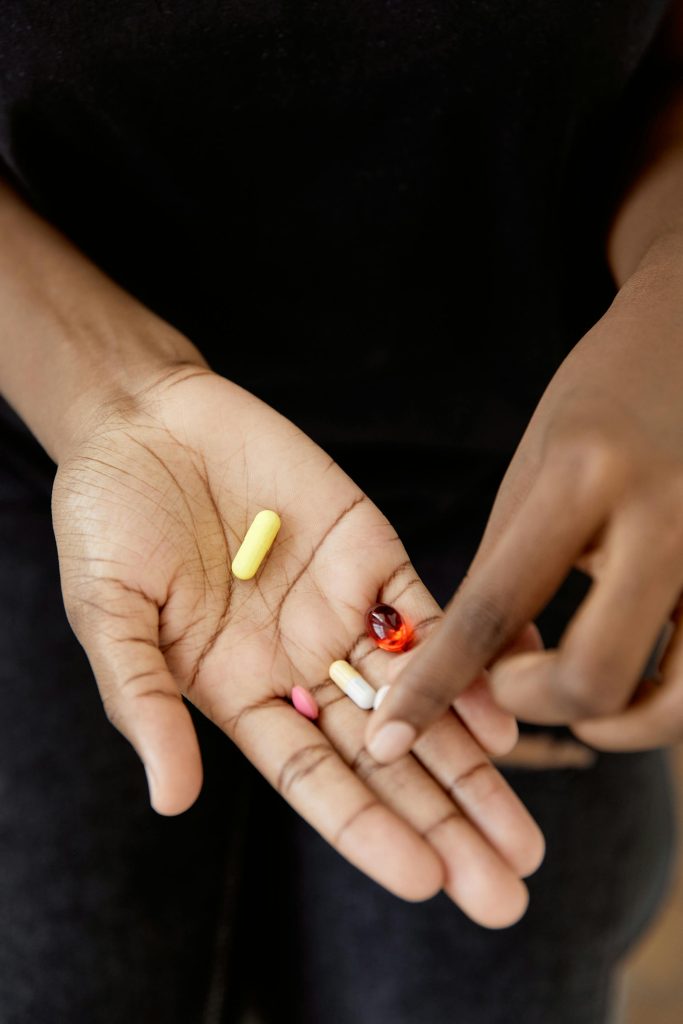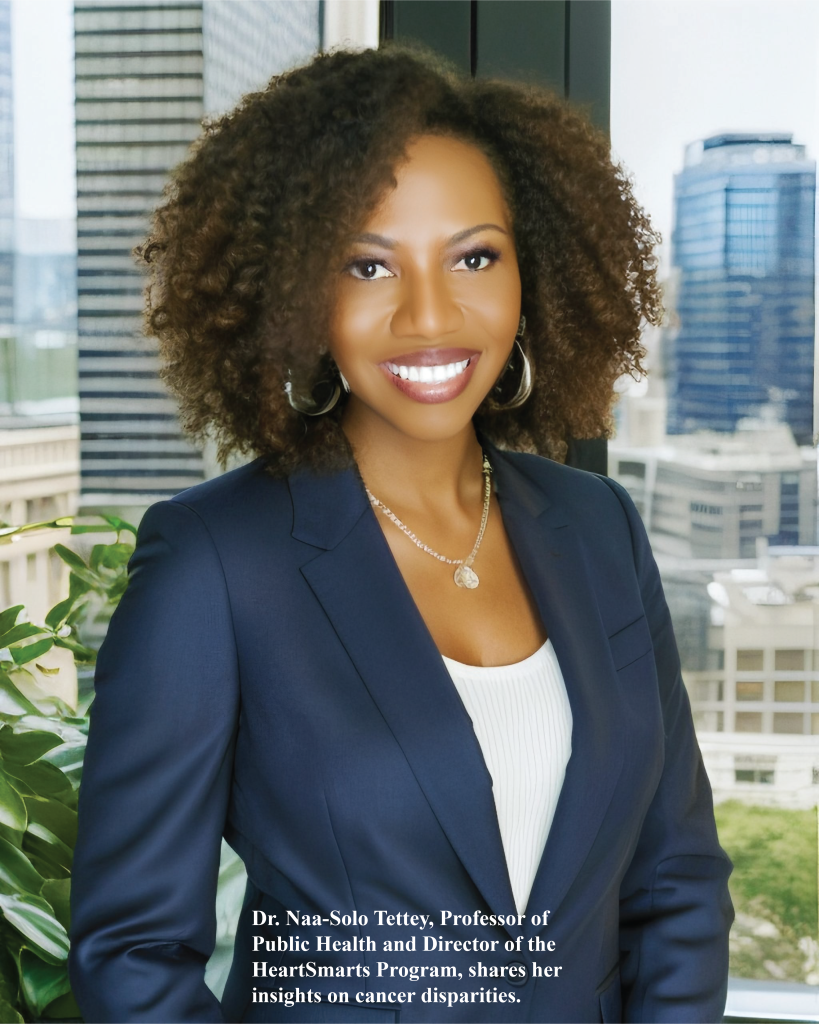Part 1, The Heart of the Fight: Addressing Cancer Disparities
by Sebastian Castro
The Black community is overwhelmingly affected by cancer in what researchers and scientists deem is an “avoidable” consequence of structural racism.
According to the American Cancer Society, African Americans “experience more illness, worse outcomes, and premature death,” having the “highest death rate and shortest survival of any racial/ethnic group for most cancers.”
According to the CDC, Black men are not only more likely to get prostate cancer than men of other races/ethnicities, but twice as likely to die from it. Despite Black women being less likely to get breast cancer than white women, they are still more likely to die from it.
Dr. Naa-Solo Tettey holds a Doctorate in Health Education from Columbia University, is a Professor of Public Health at William Paterson University, and the Director of the HeartSmarts Research Program, sponsored by NewYork-Presbyterian Hospital. She was able to outline specific contributing factors.
According to her, in terms of personal lifestyle choices, over-consumption of certain everyday carcinogens plays a big role. Red meat, alcohol, processed foods, refined sugar, and salt all lead to increases in the likelihood of developing certain cancers.
In 2011, Dr. Tettey created HeartSmarts, a community-based health education program that aims to teach participants how and why certain diseases develop, encouraging them to take steps towards prevention, aiming to “empower” members of the community.
However, alongside her advocacy of individual lifestyle changes, Dr. Tettey emphasized the role played by underlying systemic causes, called “social determinants,” that influence cancer rates. Dr. Tettey explains why it may be difficult for people to engage in healthier dietary habits.
“Access to healthy foods is a major social determinant, and we often take for granted that everyone has access to the same things,” Dr. Tettey said. “But in some communities, people are getting their food from the corner store or bodega, where there may only be packaged, processed foods, and they may not have access to a supermarket.”
Dr. Tettey said that “food deserts” are a common issue in communities of color, where access to “cancer fighting” foods, such as fruits, vegetables, whole grains, nuts, and seeds, are restricted or nonexistent.
Dr. Tettey also stressed the general lack of access the Black community is afforded, especially when it comes to healthcare.
“In communities of color, especially those that are of a lower socioeconomic status, access to quality healthcare is a major issue,” Dr. Tettey said. “Research has shown that when patients are of African American background, doctors tend to listen to them less, tend to encourage them to have testing less, tend to spend less time with them during the visit, and tend to prescribe less pain medication for them.”
Latoya Hill is a senior policy manager with the Kaiser Family Foundation’s Racial Equity and Health Policy Program. She holds a Master of Public Health degree from the University of South Florida. Hill agrees that a lack of access to healthcare is a major factor in the disparity in cancer rates.

“Social determinants of health really play a substantial role in driving health outcomes,” Hill said. “We know that Black people are more likely to receive lower quality patient provider communication, which can lead to later stages of diagnosis, lower rates of follow up and a lack of awareness of treatment options.”
Hill called for more “culturally competent” care in the healthcare industry.
“Increasing culturally competent care means healthcare providers can not only identify with the cultural backgrounds of the patients but have also been trained in understanding some of the unique needs of people of different cultures and backgrounds,” Hill said. “Provider and institutional bias and discrimination contribute to racial differences in cancer diagnosis, prognosis and in some of the treatment decisions, as well as in experiences obtaining healthcare.”
Hill spoke to historical discrimination being the primary underlying reason for the difference in cancer diagnosis and mortality rates.
“We know racism and discrimination have systemically limited health access and opportunities, and this in turn allows health inequities to persist, and in some cases, widen across generations,” Hill said.
Dr. Stefan Ambs is a senior investigator in the Center for Cancer Research’s Laboratory of Human Carcinogenesis. He agreed that socioeconomic factors are the root cause of many of these disparities, particularly when it comes to social determinants such as access to quality healthcare.
“Structural racism contributes to segregated living areas and communities,” Dr. Ambs said. “They certainly do not have the same access to healthcare.”
Historical segregation has forced people of color into neighborhoods that restrict them in specific ways that can contribute to higher cancer rates. While Dr. Tettey cited “closer proximity to environmental toxins and limited access to spaces to exercise safely outdoors,” Dr. Ambs pointed out how segregated neighborhoods complicate healthcare even in a pure transportation sense.
“In these underserved communities, it’s tough to seek healthcare when you don’t have the time. It’s inconvenient when the healthcare provider isn’t located in the community,” Dr. Ambs said. “You have to drive out into another community in order to get it, so it makes it difficult for you.”
Dr. Tettey echoed this sentiment, mentioning the combination of poverty, a lack of health insurance, and high medical costs.
“Poverty is the underlying issue,” Dr. Tettey said. “Unless we address socioeconomic status and issues of poverty, these disparities will continue, because wealth is a leading social determinant.”
Dr. Tettey encouraged members of the community, especially those in positions of leadership like church leaders or business owners, to advocate for change.
“We must advocate for more funding for underserved communities, to provide more programs for them, to increase access to jobs, increase access and availability of quality health care,” Dr. Tettey said. “When there are communities that have poor education systems, lack of jobs and opportunities for the people who live there, the cycle of poverty just continues.”
Hill promoted specific changes in the healthcare system, one of her main points being cancer screening.
“Screening is important in order to be able to ensure that cancer is diagnosed early and to improve survival rates,” Hill said. “We also know that Black people tend to face increased barriers to accessing timely and quality care, and this translates as well into accessing screening.”
Dr. Ambs noted that Black patients often receive their diagnosis in the later stages as a result of this delayed screening. In that vein, he also advocated for increased healthcare insurance coverage, specifically naming the Affordable Care Act as a step in the right direction.
“It makes a difference in minority populations,” Dr. Ambs said.
However, Dr. Ambs emphasized that closing these disparities helps the health of people of all demographics.
“Health disparities? It’s true, they exist, and they are avoidable,” Dr. Ambs said. “Actually fighting health disparities, or trying to reduce health disparities, is one of the best tools we have to reduce overall cancer mortality in the society.”
Even if the work isn’t over, Dr. Ambs reiterated that the medical community’s work has had an effect.
“Those gaps that you have where you really had these very high rates in the Black community versus other communities, this is actually closing; so we are really making progress,” Dr. Ambs said. “It’s still excessive, and we can still do more, but we have succeeded in so many ways; it’s not a lost fight, it’s just that they have to continue it, and they have not given up.”

